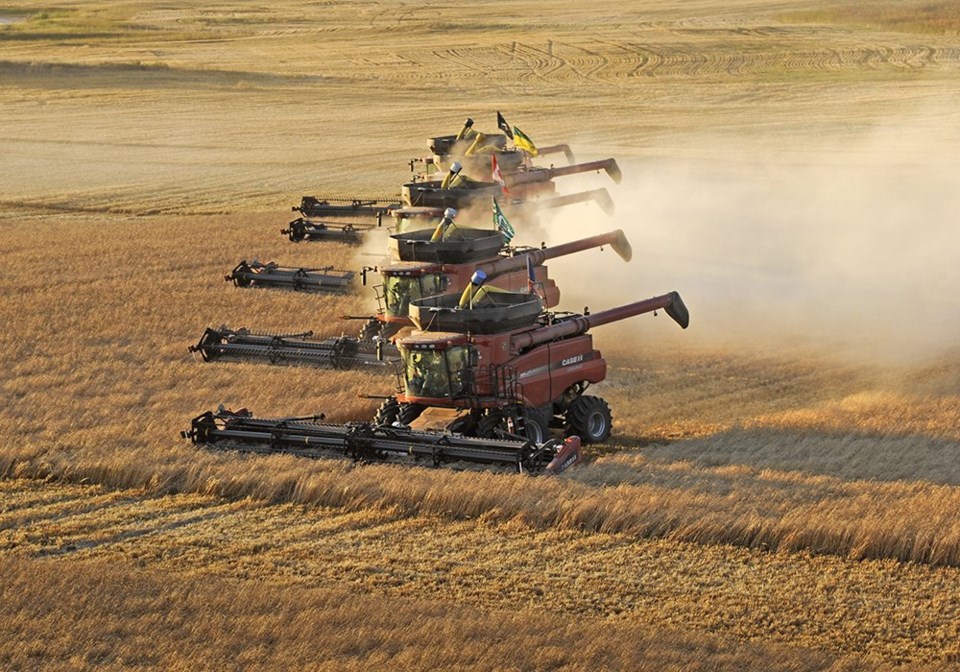WESTERN PRODUCER — The world wheat supply and demand situation is deceiving, says a grain analyst.
On paper supplies look very comfortable. The U.S. Department of Agriculture is now forecasting record world production.
But dig a little deeper and plenty of reasons for concern will be found, said Masha Belikova, grains reporter with FastMarkets Agriculture.
Russia has a massive crop but also huge challenges. The latest trade estimates are for 101 million tonnes of production, shattering the previous record of 88 million tonnes.
“(But) they are not able to move that big crop,” she said during a recent FastMarkets webinar.
August and September are usually the big months for Russian exports, but shipments have been 25 to 30 percent lower than last year because of a punitive export tax and other factors.
The USDA is forecasting 42 million tonnes of Russian wheat exports, but Belikova thinks that is too high.
Russian President Vladimir Putin hasn’t helped matters with talk of shutting down Ukraine’s Black Sea grain corridor. That drove up wheat prices and consequently the export tax.
There are also financing issues because many banks in importing countries are refusing to deal with Russian banks.
Belikova said the grain corridor has doubled monthly grain exports from Ukraine to four million tonnes.
That has increased domestic wheat prices by $20 to $30 per tonne, which was desperately needed because prices had been hovering around the cost of production.
Freight rates have come down but are still $10 per tonne higher than Russian rates and $20 per tonne higher than those in Romania.
International buyers remain nervous about doing business with Ukraine because the grain corridor deal expires Nov. 20, and nobody knows what will happen after that.
Putin is already making rumblings about canceling the pact. Russia also continues to bomb port infrastructure. If one of those bombs sinks a grain ship, trade will likely come to a halt.
“(Traders) all understand there is a huge risk it will all stop at some point,” she said.
The Ukrainian Agrarian Council is forecasting that winter crop area will be reduced by at least 30 percent in that country. The council’s members farm about 5.2 million acres of land.
“The main reasons that encourage agricultural producers to reduce sown areas are the high cost of mineral fertilizers, problems with grain sales as well as too low purchase prices for agricultural products,” the group said in a Sept. 12 news release.
Much of the European Union’s supplies are already spoken for. By early November half of the wheat crop from Germany and France will be out the door.
Harvest rains have affected crop quality. There are a lot of offers for wheat with 11.5 percent protein out of Germany and the Baltic states. Typically they are selling 12.5 percent protein wheat.
A lot of European wheat may find its way into feed markets because of a big shortfall in the EU’s corn crop, said Belikova.
Australia is set to harvest another bumper crop this year. However, heavy rainfall is expected along the east coast in the next few months. That is where the country’s high protein wheat is grown.
Local farmers and traders are telling Belikova that they anticipate more feed wheat and lower protein wheat in that area as a result.
The price gap between high protein wheat and feed wheat is rising, reflecting the anticipated shortfall. Traders are not keen to sell high protein wheat.
Export capacity, which is already booked through March, is the other rationing factor in Australia.
“It is limiting the opportunity for buyers to step in and buy,” she said.
The USDA is forecasting 19 million tonnes of production in Argentina, but locals tell her it will be closer to 16 million tonnes, and nine million tonnes of that have already been spoken for.
Argentina also has less grass than usual for feed, so some export wheat may be diverted to that domestic market.
Canada and the United States both had good rebounds in production, but wheat from those two countries is not price competitive with Black Sea and EU wheat, which is limiting demand for North American wheat.
Contact [email protected]




